Agile development: why and how to use it in your web and app workflow
Original Source: http://feedproxy.google.com/~r/CreativeBloq/~3/RiCMtln21Uw/agile-development-why-and-how-to-use-it-in-your-web-and-app-workflow
Agile development has evolved quickly over the last 20 years, thanks to new methods and tools that make it easier to innovate rapidly.
Top tips for nailing project management
It provides a way for developers, designers and managers to focus on providing the best product to their customers through feedback, iteration, collaboration and adaptability.
For the web, the agile process has provided a fundamental shift in how we deliver products to our users. Let's examine what's involved.
Traditional waterfall process
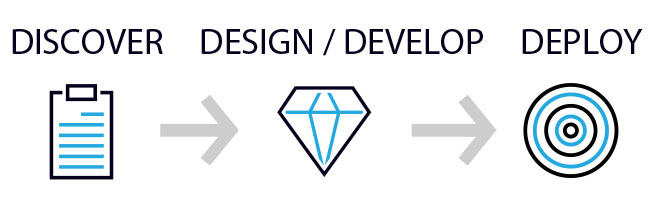
The waterfall process is often cumbersome, costly, time-consuming and demeaning to the real people who need the product: the customers
Most of us are familiar with and have experience of the traditional waterfall approach to creating a website, where the stages are defined as milestones, with a clear start and end date.
Waterfalls usually consist of four phases: discovery, design, development and deployment. In the discovery phase, we tend to talk with the client's stakeholders, usually staff or board members that wanted to give input and examples of what they liked for us to follow. Rarely does this stage involve talking with actual customers to get their input.
The design phase uses the outcomes of the discovery to create compositions, usually of a complete page design with often limited rounds of revisions. This is followed by the development phase, which takes the completed page-design comps and builds them to spec, making sure that every pixel is in the proper place in order to execute the masterful vision of the designer.
And finally the deployment phase starts, usually with a beta launch in which quality assurance is carried out on the site for a few weeks. It then launches to the public, sometimes with a beta signifier on the logo as a badge of honour.
The problem with this is that all of your discovery happens weeks, maybe even months, before anything is actually put in front of a customer. Often the features that we assumed would be awesome fall flat once the users are able to interact with them, making our entire effort a partial waste of time and money.
This waterfall process is often cumbersome, costly, time-consuming and demeaning to the real people who need the product: the customers.
Enter the Agile Manifesto
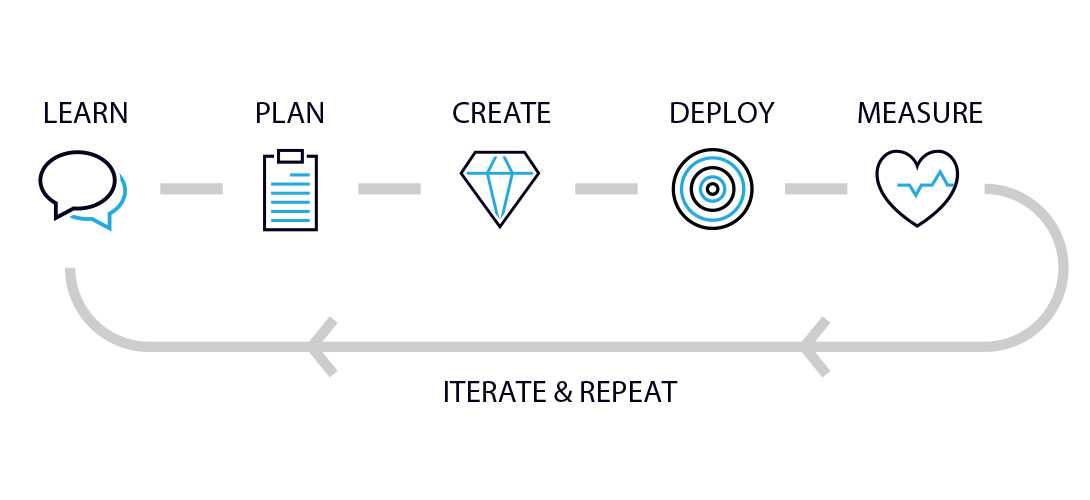
Another popular ingredient used in the creation of working software is to approach it in small cycles. This gives the opportunity to build, test and ship the product every one to two weeks
The modern-day agile development process was sparked by the 2001 Agile Manifesto. It was penned by 17 developers who were fed up with over-controlling management and outdated feature requirements that didn't focus on what the user wanted or needed.
The Manifesto has four key beliefs that provide the foundation of the agile movement as we know it today:
Individuals and interactions over processes and toolsWorking software over comprehensive documentationCustomer collaboration over contract negotiationResponding to change over following a plan
Even though the Manifesto was born in the early 21st century, it grew from previous development methodologies as far back as the mid-20th century that were agile in nature, such as feature-driven development (FDD), extreme programming (XP) and even Scrum.
Each of these beliefs have tools and resources that make it easy for you to put them in place right now.
01. Individuals and interactions
A focus on the people that use our products and how they use them is extremely important. In the past, other methods like waterfall have neglected the user and outright ignored their humanity. Human-centred design, also known as design thinking or agile design, focuses on making us get out of our chairs to interact with people and see how individuals use our product.
There are three key areas of human-centred design: observation, analysis and ideation. Within these areas are some examples that might be familiar, like one-on-one interviews (observation), personas (analysis), or prototyping (ideation), to name a few.
Companies such as Ideo and Luma Institute provide vast resources on how to conduct qualitative exercises with real customers.
02. Working software
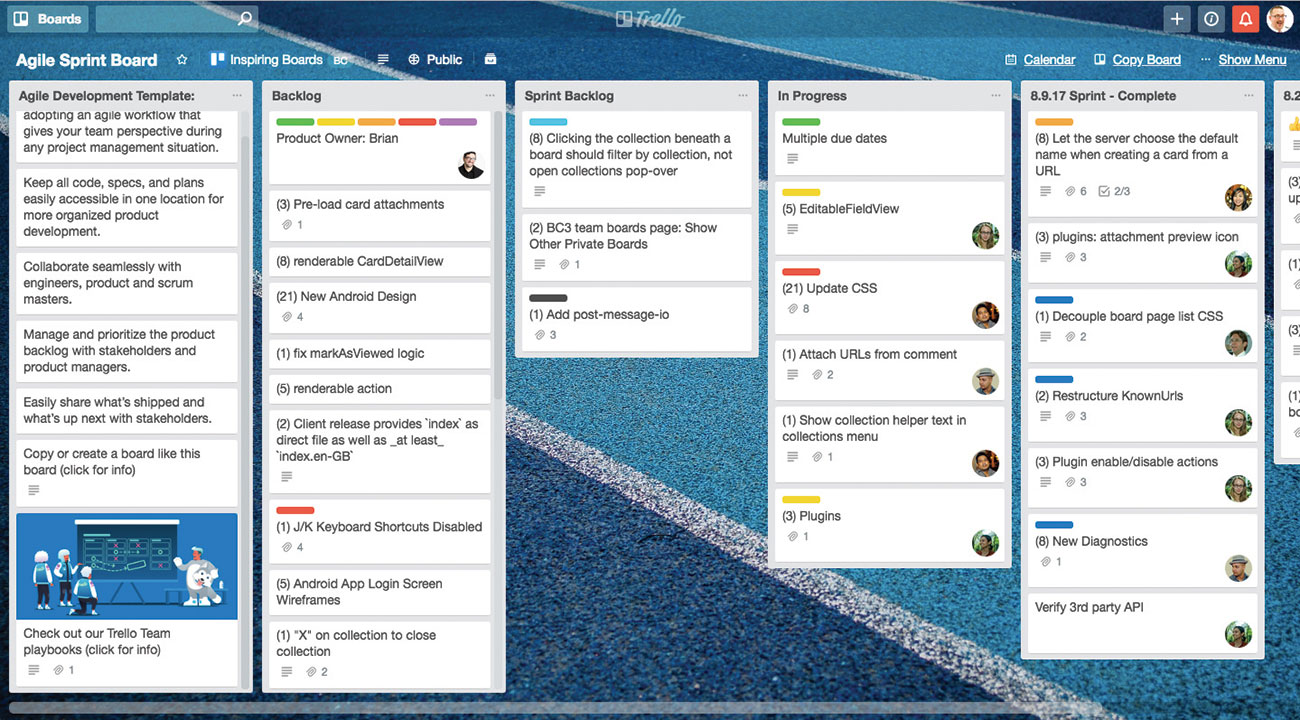
Trello offers a clear way of managing sprints using a Kanban style of task management that is popular in Silicon Valley
We shouldn't wait for a product to be perfect before sharing it with the world. Customers value transparency and collaboration. Make them happy by giving them working software quickly and improving it consistently.
An often-used buzzword you'll hear that embodies the ideals of working software is minimum viable product or MVP. The concept is that we should ship early and often so the product gets in front of real users to test and improve.
Using agile principles has offered me a creative problem-solving method at work. In addition to directly impacting business performance, applying agile to my IT projects has driven team collaboration and effectiveness in achieving business results.
Victoria Nwobodo, IBM
Another popular ingredient used in the creation of working software is to approach it in small cycles. This gives the opportunity to build, test and ship the product every one to two weeks while continuously making improvements. These cycles are called 'sprints'.
Sprints also reinforce your brand in the eyes of consumers. They'll feel content, sometimes even excited, to know you'll regularly be adding new features.
The project-management application Trello, offers a clear way of managing sprints using a Kanban style of task management that is popular in Silicon Valley.
Version control systems such as Git also complement the sprint workflow by being able to commit code, branch it off to try new features, merge it to push to production and even go back in time to bring back previous solutions or see why something didn't work before.
03. Customer/team collaboration
Your users want to feel heard and acknowledged, especially when your product frustrates them. Creating a culture of collaboration can help you connect to these customers in ways you never thought possible.
A great way to start collaborating with users is to invite them to provide feedback on features that have not been released to the general public yet. This gives you the chance to get an assessment of how well the features work while giving the customer a sense of inclusion.
The development methodology is sensitive to design decisions and ideally, said decisions would be best made as teams.
Henri Helvetica, web performance analyst
Another important way to collaborate is to ensure your team and customer testing segments are a diverse group of people. Create a culture of inclusion that focuses on all ethnicities, genders and abilities. There have been many horror stories in the tech industry where a lack of inclusion ended up alienating a core demographic and ultimately causing the death of a product. Create a culture of inclusion from the beginning and always keep working at improving it.
At the Generate New York conference, Dan Mall made an excellent presentation on the importance of creating a common language and trust between your designers and developers. In his talk, Dan equated a roller coaster to the importance of creating a shared experience among the team to design, build and test together – both early and often.
Designers and developers work best in an agile environment when they understand each other’s struggles. Educating each other through lunch-and-learns, story reviews and check-ins, allows your team to grow by learning from each other.
Tessa Kriesel, Pantheon
04. Respond to change
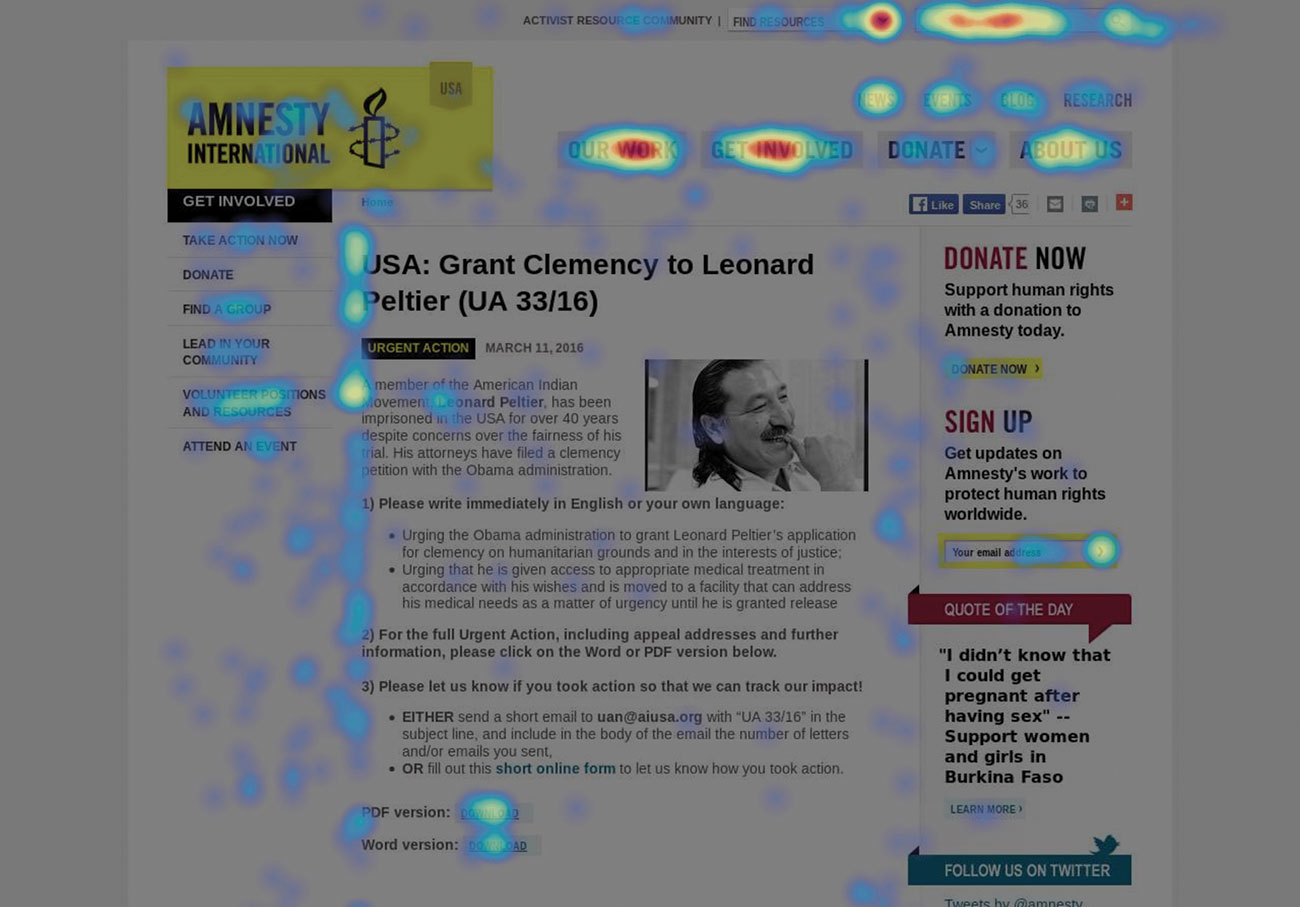
Hotjar provides heatmaps, user recordings and several other features that shows how a customer interacts with your product
The needs of our customers are ever evolving. What worked last year will need to work even better and faster this year. Customers come to expect improvement.
To handle this, the agile process forces us to measure what works. Tools like Google Analytics provide a quantitative understanding of where users are going on your site, while something like Hotjar reveals how your visitors are clicking and scrolling. Hotjar provides heatmaps, user recordings and several other features that shows how a customer interacts with your product.
Launching a product is only half the story; the other half is continuously reviewing analytics and user feedback to make sure the thing you built is actually accomplishing your goals.
Mario Pabon, Underdog
Another practical tool is UserTesting. This tests real users, either yours or ones the tool supplies. They run through questions and talk to you with their microphone as their screen is captured on video. This can become an invaluable asset to gather feedback from a wide array of customers.
Keep in mind that your budget should focus on user testing and measurement as much as design and development. It's the only way we can see how users are interacting with a product.
One of the greatest things about digital product design is that we get to make educated guesses about the way people will use what we dream up. We get to be wrong, and we get to improve upon our mistakes.
Dan Mall, SuperFriendly
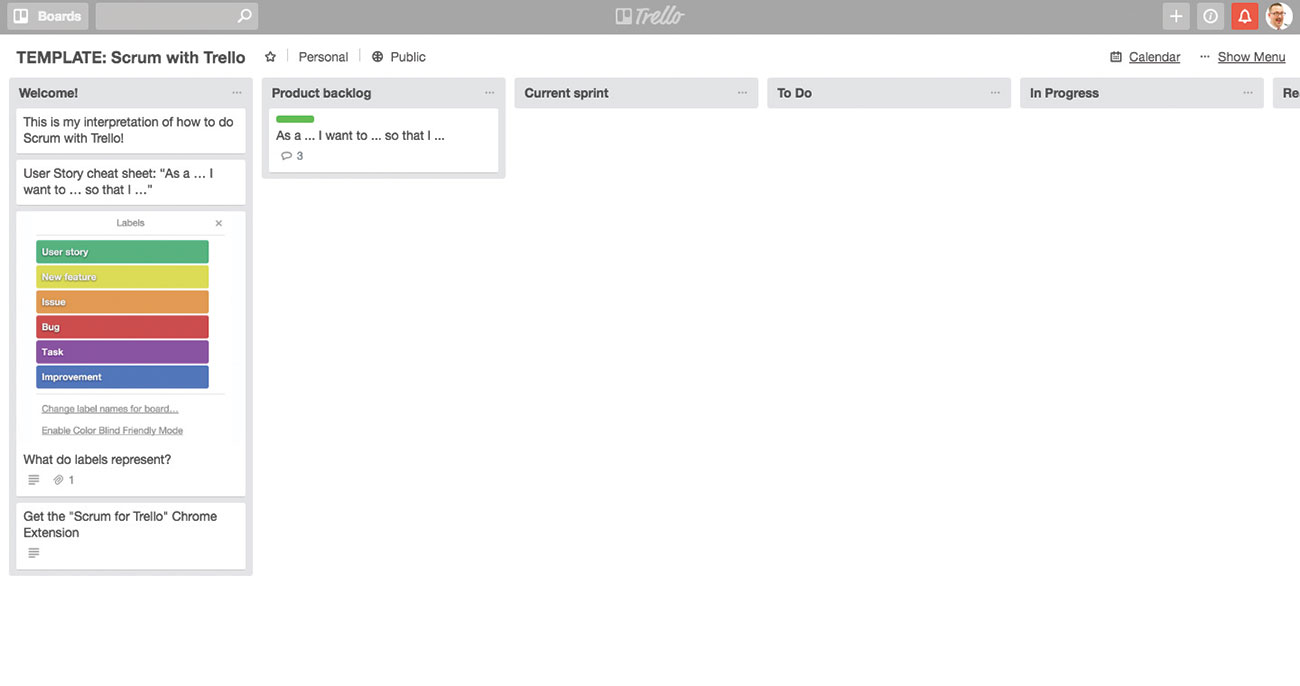
Elise Chant provides a free template on Trello to start your own Scrum board
An important part of responding to change is managing expectations of when new features can be completed or bugs squashed. The Scrum Framework combined with a tool like Trello, Jira, or Asana can handle this.
Scrum is an agile framework that outlines the roles of team members, assembles a list of needs called a backlog, defines how to handle sprints, sets a method of reviewing sprints after completion and many other useful tools.
Agile design systems
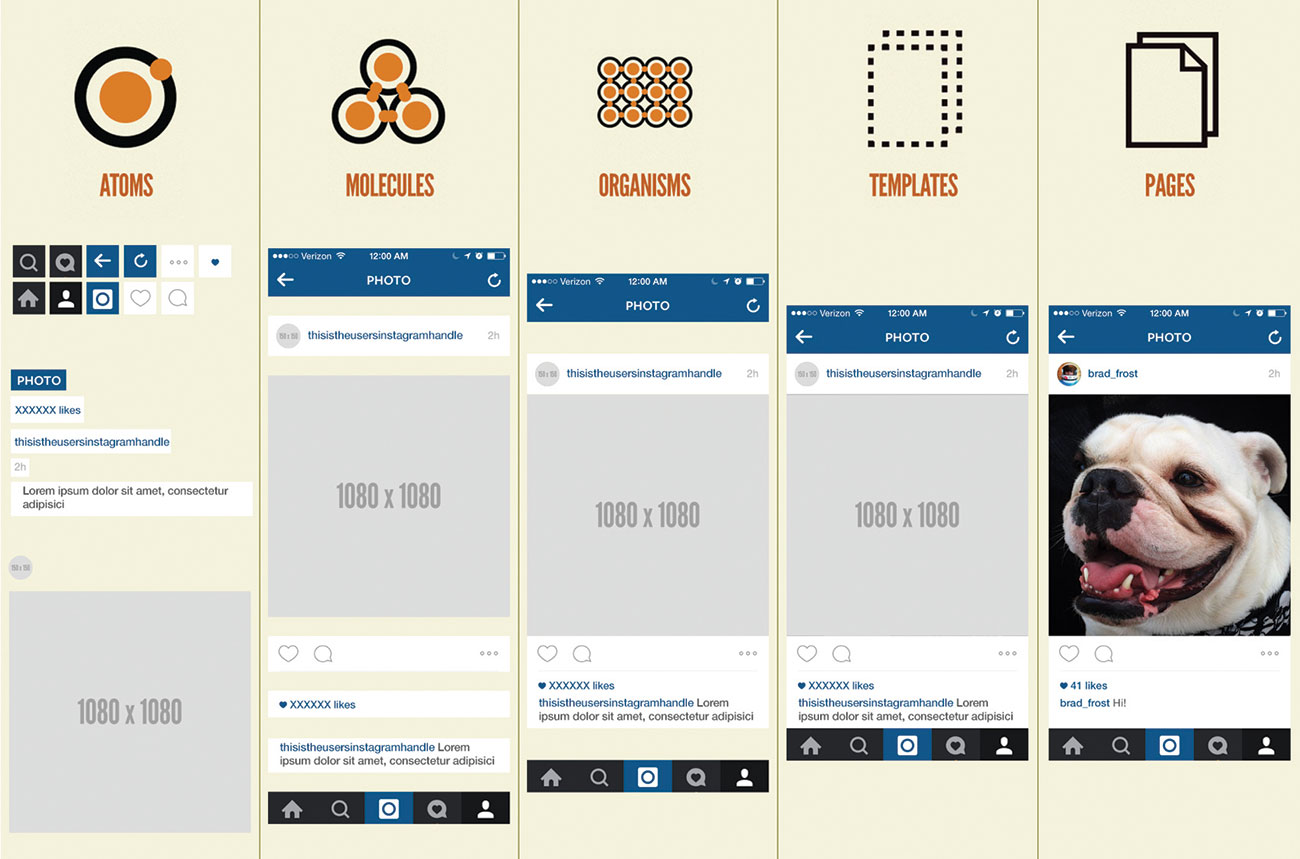
Systems like Atomic Design focus on simple components that can be iterated upon
The movement in web and app design to utilise systems for easier prototyping and testing of smaller pieces of content is another expression of agile design.
Systems like Atomic Design or the Bootstrap Framework focus on simple components that can be iterated upon.
Design systems also make the product future-proof, unlike waterfall designs. They can keep evolving; even across different devices and use-cases, the design system has the capacity to grow.
The best thing about agile is that it shook up the practice of design… Agile broke the stranglehold of waterfall, and since then, many of us continue to reinvent the way we work, just as we reinvent what our digital medium can be and do.
Jeffrey Zeldman, studio.zeldman
Your agile future
We've outlined several ways you can utilise agile methodologies in your work but keep in mind that it's more important you focus on processes than allegiance to specific tools. Take it upon yourself to seek out ways to introduce more collaboration, testing, and measurement into your work. Outline what you want to accomplish and the tools will fall into place as necessary to help you iterate your way to success.
This article was originally published in issue 308 of net, the world's best-selling magazine for web designers and developers. Buy issue 308 here or subscribe here.
Related articles:
Get started with an agile workflowBest project management software10 top tips for project delivery

Leave a Reply
Want to join the discussion?Feel free to contribute!